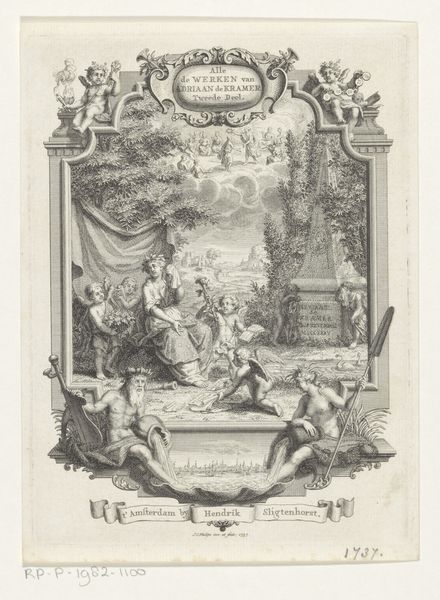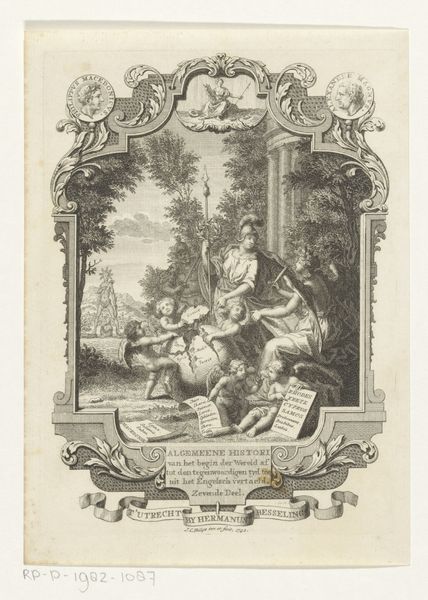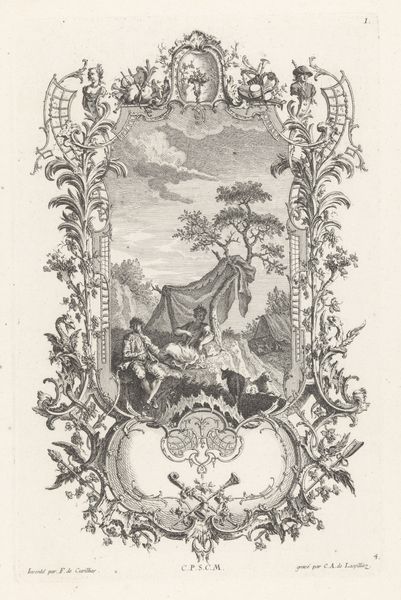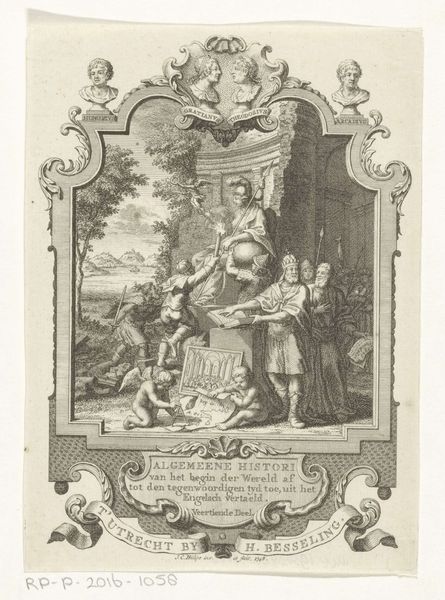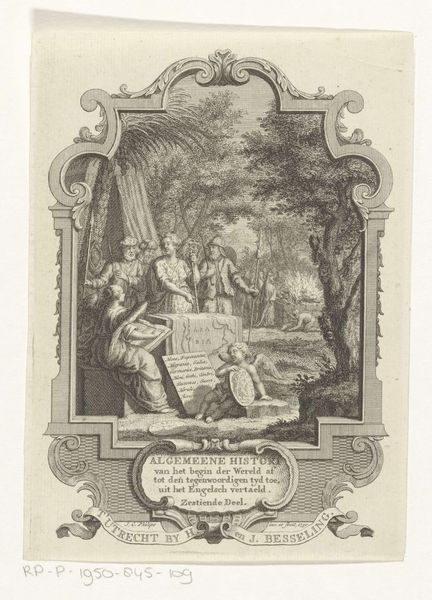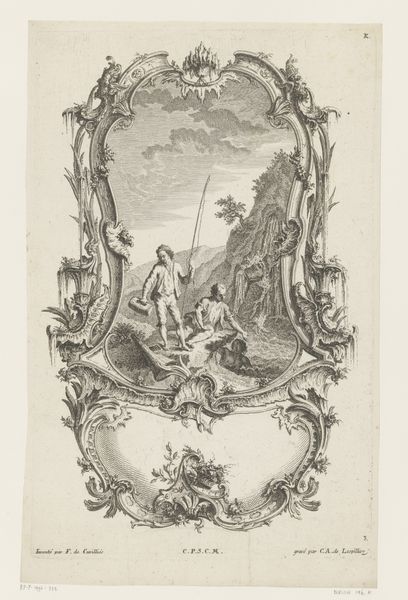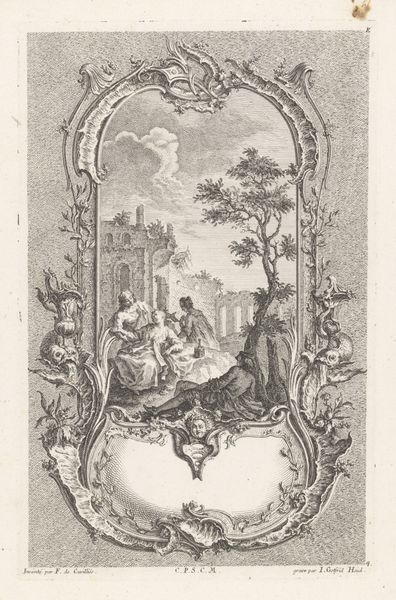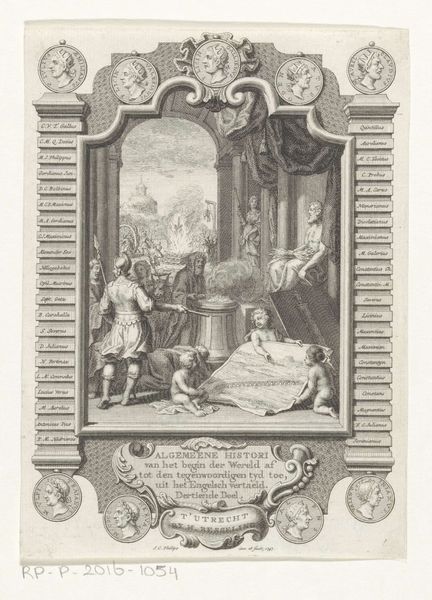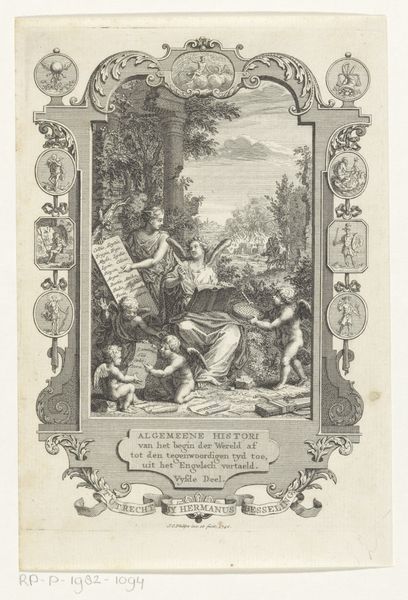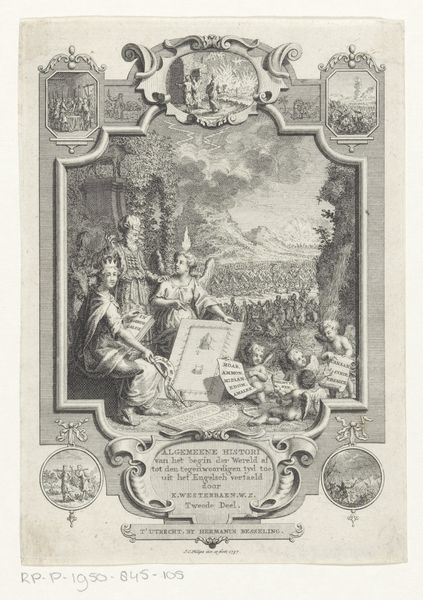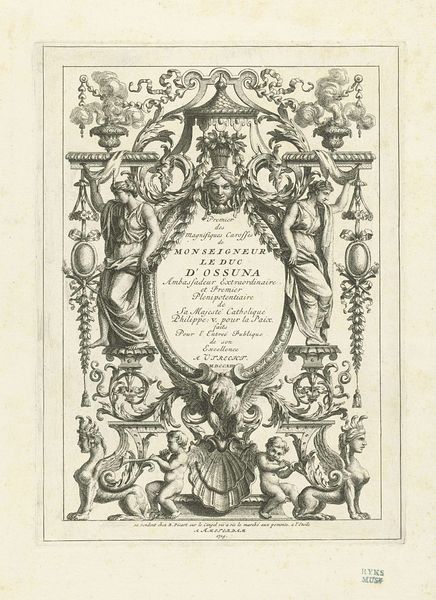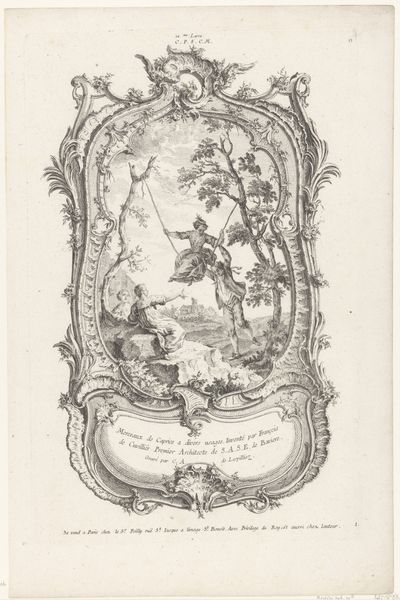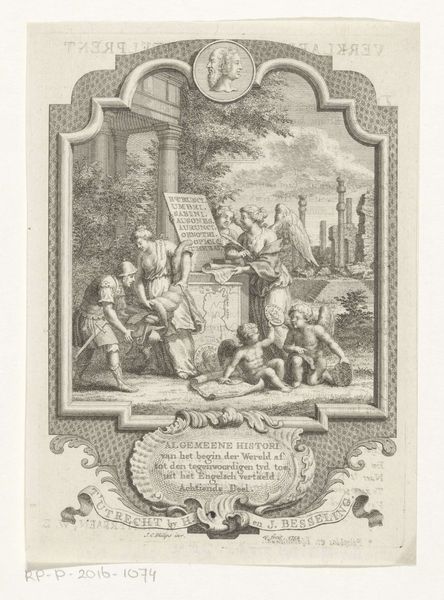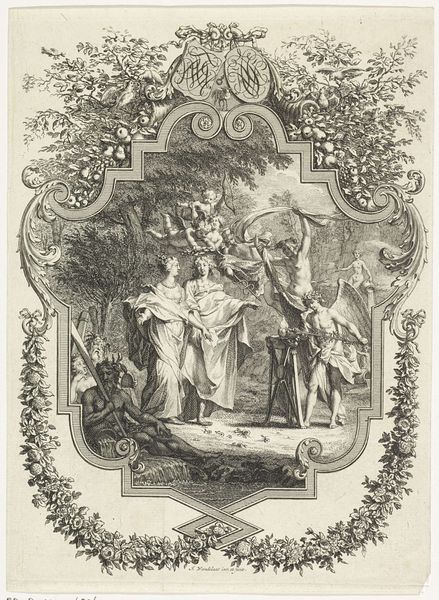
print, engraving
#
baroque
# print
#
landscape
#
figuration
#
line
#
genre-painting
#
history-painting
#
engraving
Dimensions: height 359 mm, width 228 mm
Copyright: Rijks Museum: Open Domain
Curator: Welcome. Today, we're observing "Herder en vrouw met kind," or "Shepherd and Woman with Child," an engraving by Carl Albert von Lespilliez, dating back to 1745. It is a detailed scene encased within an elaborate, decorative border. Editor: My immediate response is that of artifice, rather than authentic representation of rural life. This feels like pastoral fantasy. Look at how the family is positioned: they are static within an obviously staged environment. Curator: Indeed, the work certainly reflects the Baroque fascination with ornamentation. Note the use of line; the controlled, precise execution used to create visual interest. And observe how that contrasts with the pastoral theme... The idealized rendering gives it that polished feel of its era. Editor: But I wonder what ideological work is done by creating this image of, perhaps, simple virtue? Here, even representations of rural family life were used to signal class status. How far removed are the leisured viewers from the subjects presented for their visual consumption? Curator: Undoubtedly, the print operates on multiple levels. One must acknowledge the work's formal composition and the technical expertise displayed. Lespilliez's mastery lies in using line and form to guide the eye. Note the figures are placed within a strong triangle that reinforces structure and depth. Editor: Precisely, yet we cannot forget to see the construction of class within the picturesque. What about their socio-economic realities are absent? We get not truth, but instead a romantic idyll intended for bourgeois consumers, reflecting and reifing their own notions about wealth, value, labor, and the rest. Curator: Agreed that Lespilliez engages in a calculated balancing act, creating aesthetic satisfaction whilst reinforcing ideological boundaries. His skilled composition ensures visual delight—perfectly encapsulating both fantasy and class consciousness. Editor: To conclude, acknowledging the context in which artworks emerge encourages us to understand the relationship among aesthetics, ethics, and meaning-making, as much today as in the 18th century.
Comments
No comments
Be the first to comment and join the conversation on the ultimate creative platform.
